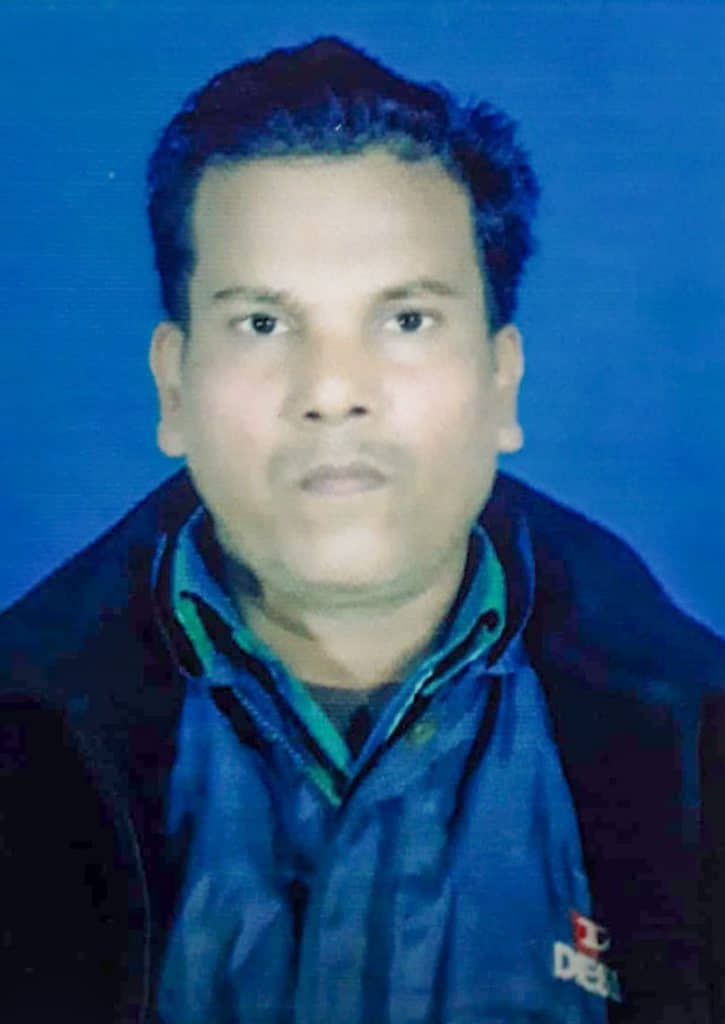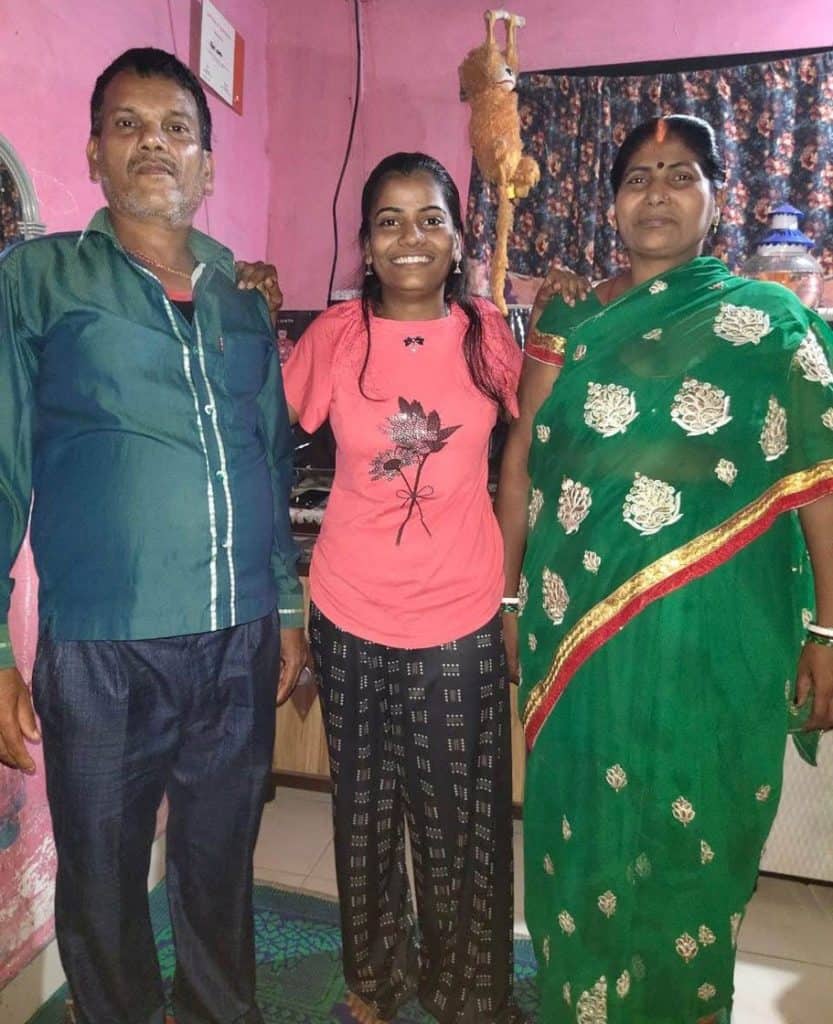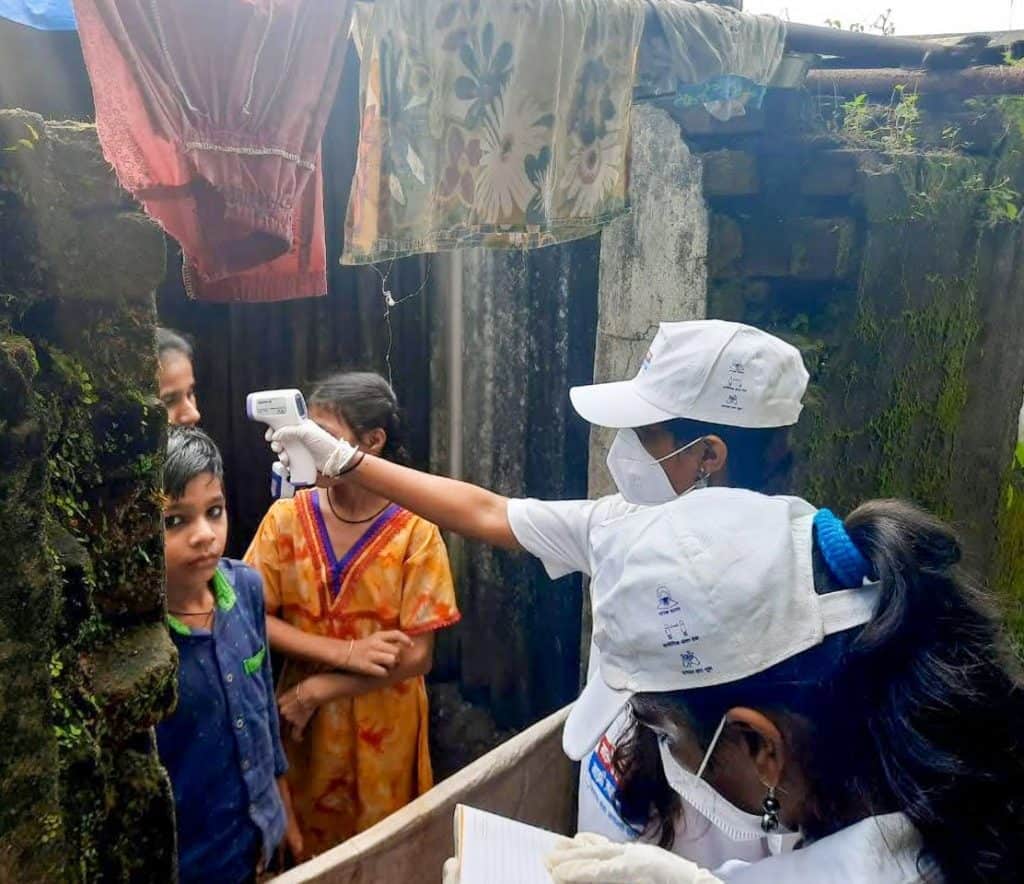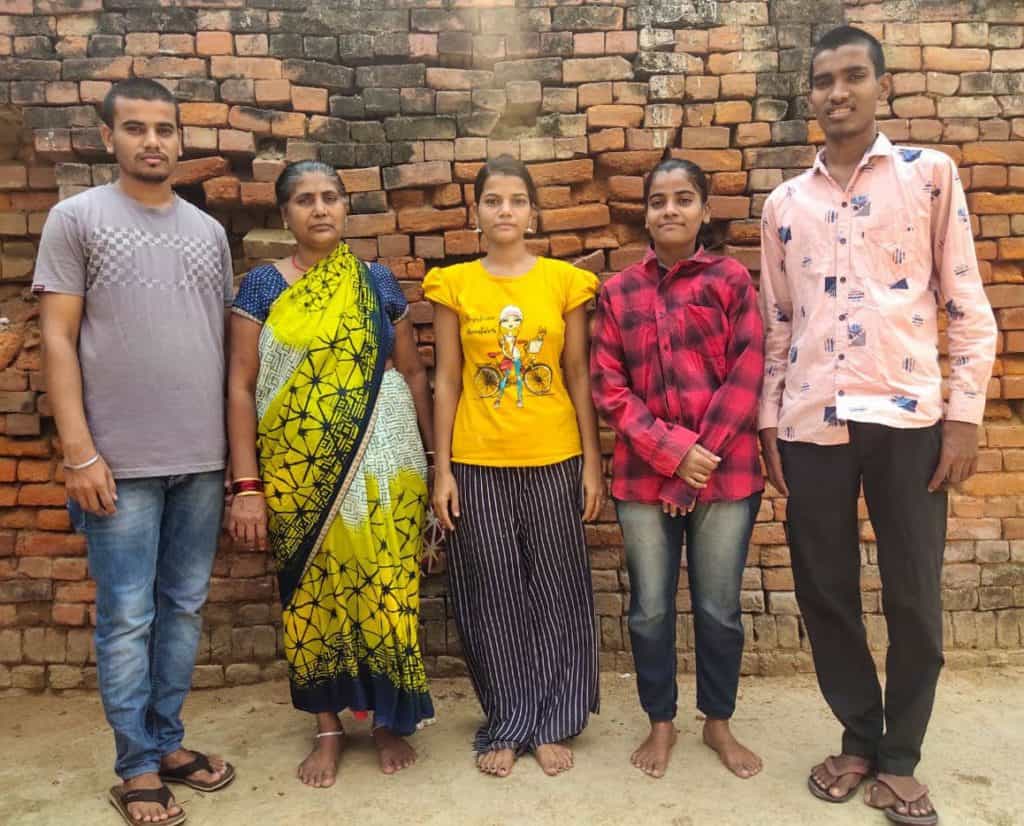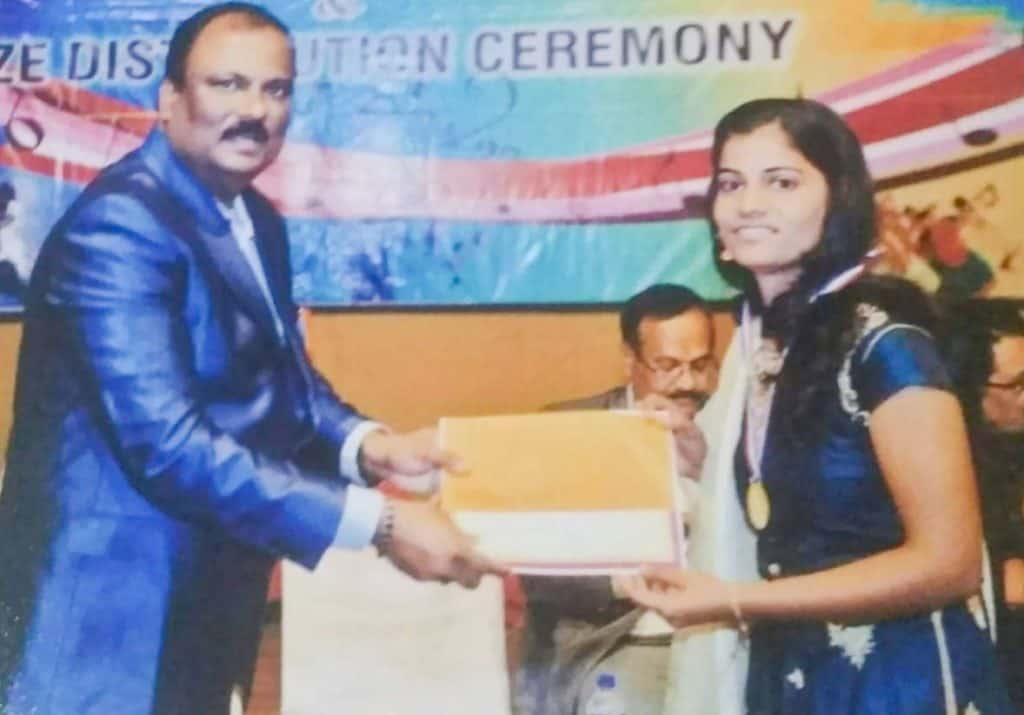Gopal Gupta had decided to leave Mumbai for a second time in a year when it seemed certain that lockdown-like restrictions would be introduced again in Maharashtra by mid-April.
Instead, at the end of March, his family boarded a train carrying a small red earthen pot with his ashes, to take it back to Kusoura Taluk Sahatwar, their village in Uttar Pradesh.
“I don’t think I can only blame corona for my father’s death…Even if he had lived, he would have been without one leg,” says Jyoti, Gopal’s 21-year-old daughter.
When Gopal, a 56-year-old vegetable vendor in Kalyan, developed a bit of a cough-cold in the first week of March, he had felt better after getting some medicines from the basti’s clinic in the Palavani area, where the family rents a two-room unit.
It had been barely two months since he returned in January from their village in Bansdih taluka in UP’s Ballia district. But just as work started to pick up, the second Covid surge began unfolding. “My father didn’t want to risk waiting again like last year,” says Jyoti. So the family began preparing to leave again for their village.
Read more: Has Maharashtra learnt from lockdown 2020? Many say yes.
But at around 5 a.m. on March 10, Gopal started feeling breathless. He was taken to a local clinic and he tested Covid-positive. The family rushed him to the KDMC (Kalyan Dombivali Municipal Corporation) ground that has been converted into a ‘Dedicated Covid Health Centre’. (Kalyan and Dombivali are cities within the Mumbai Metropolitan Region). But his condition deteriorated and the staff at the centre asked the family to shift him to a better-equipped facility. That afternoon, Gopal was taken to a private hospital in Kalyan. “We really didn’t know where to go. We had little time to think and were scared with my father’s condition getting bad and bhai ’s situation,” recounts Jyoti. He brother, Vivek, 26, had also tested positive and was asked to quarantine in a centre in nearby Bhiwandi for 12 days.
Once they reached the private hospital, the family was asked for a Rs. 50,000 cash deposit. Gopal was taken to the ICU and the family ran to the hospital’s store to get the prescribed high-cost medicines. “We began using up the little savings we had. It kept getting worse for us as each day we got a new bill to pay,” says Shashikala, Gopal’s wife, a homemaker who also worked in the family’s business, bringing vegetables from mandis.
Gopal and his son Vivek both sold vegetables, together earning Rs. 300-700 a day before the lockdown last year. This sustained their family of six – they belong to the Teli community (an OBC). After completing his graduation in 2013-14, Vivek had found a job as a cashier in a small mall in Navi Mumbai, earning Rs. 12,000 a month. But when the mall shut down, he too began selling vegetables with his father.
Gopal and Shashikala’s youngest son, 19-year-old Deepak, who was to start Class 12, had to discontinue his education during the 2020 lockdown. Jyoti managed to pay her third year BCom course fees and has been attending online classes – both with the help of an NGO and friends.
Her sister, 22-year-old Khushboo, had dropped out of school after completing Class 9, due to an earlier financial crisis in the family. “My father never wanted this but we had no choice…” says Jyoti. Her two other sisters are married and live in Uttar Pradesh.
Read more: Lockdown 2021: What changed for the Mumbai migrant worker’s journey back home
Last year, by June, they left for their village and stayed in their dadaji ’s small house. In November, Jyoti had her fifth semester exams and returned to Mumbai with Vivek. He resumed selling vegetables and managed to make Rs. 200-300 a day. Jyoti found a temporary job with a public hospital in Kalyan, going door-to-door to give polio drops to children, and to check temperature and oxygen levels for possible Covid-19. She did this for three months and was paid a total of Rs. 2,500.
In January 2021, Gopal and the rest of the family returned to Mumbai – there was no work in the village and their savings were draining away. Last year, they family received ration relief from an NGO. But the house rent of Rs. 3,000 and electricity and other bills remained, and they were using up savings for this too.
Then in March, with Gopal’s 10-day stay in the private hospital, the bills mounted steeply – a staggering Rs. 221,850 hospital bill, plus around Rs. 158,000 for the medicines. (This reporter has seen all the bills.) Then there were CT-scans, plasma infusions, lab tests, ambulance costs – for a total of nearly Rs. 90,000
The vegetable vendor’s family – struggling already after last year’s lockdown – ended up spending nearly Rs. 5 lakhs for Gopal’s treatment.
They were not aware that in May 2020, Maharashtra’s health minister Rajesh Tope had announced free treatment for all Covid-19 patients in the state under the Mahatma Jyotirao Phule Jan Arogya Yojana (MJP-JAY). The Kalyan jurisdiction has four private hospitals (and one government hospital) under this scheme. “If we had known, why would we have gone to any other hospital?” asks Jyoti. “None of us knew about this.”
In May 2020, the Maharashtra government had also capped the fees of Covid-19 treatment in all private hospitals at Rs. 7,500 a day for an ICU bed, and Rs. 9,000 for one with a ventilator.
Speaking of the MJP-JAY scheme and the subsidised rates, Vijay Suryawanshi, commissioner of the Kalyan-Dombivali Municipal Corporation, told me: “For registration under the scheme there are some conditions to follow, and last year we had appealed to all private hospitals [in the KDMC’s jurisdiction] to register. But some of them may not have met those conditions that need to be fulfilled to come under this scheme. And the subsidised rate [for private hospitals] still doesn’t help low-income groups much.”
Speaking of such schemes, the India Exclusion Report 2019-2020 notes: “Despite the presence of schemes like PM-JAY [Pradhan Mantri Jan Arogya Yojana], there is no visible reduction in the expenditure of the poor on healthcare.” The report, by the Centre for Equity Studies, New Delhi, also states: “…the absence of a large network of centres providing public healthcare and the presence of expensive private hospitals… ensure that the poor are devoid of any other choice.” Suryawanshi adds that the KDMC has been enhancing facilities for public healthcare, and has gone up from only two public hospitals last year to six centres now. “We are getting more ICU beds, ventilators, and O2 beds as well,” he said.
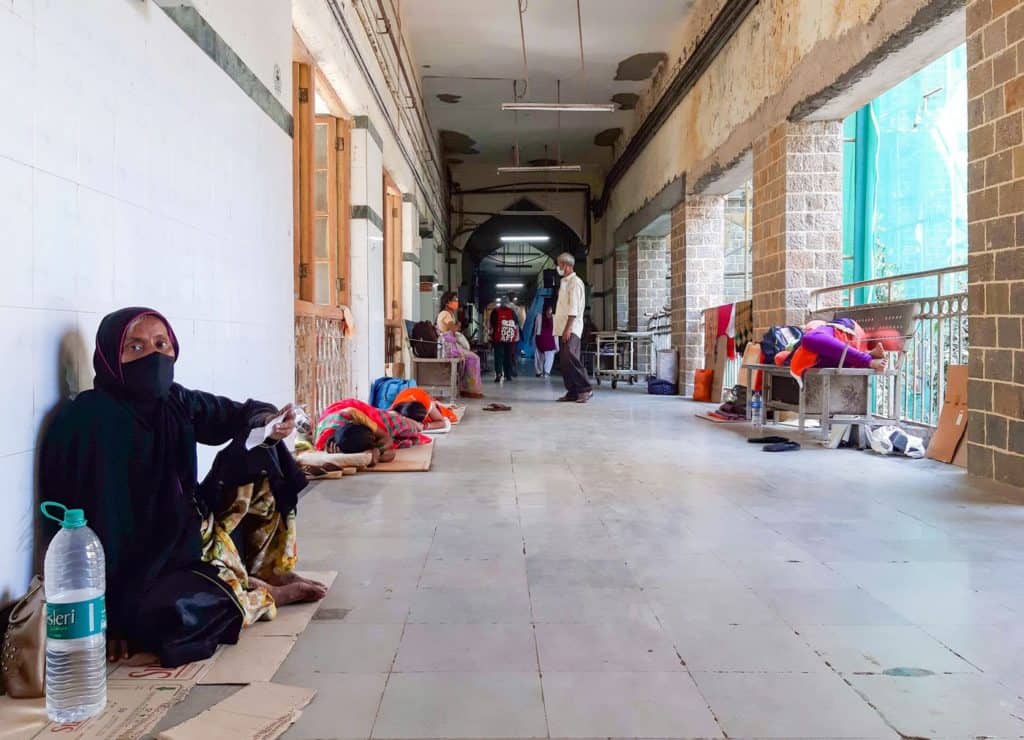
He also said that a team of auditors keeps a check on overcharging by hospitals in the KDMC jurisdiction. But, he adds, “There still lies a loophole which a few private hospitals are rampantly using. The government rates don’t include every test and medicines [or investigations like CT-scans], and some hospitals have increased these bills. We have appointed a task force to go to private hospitals and look at cases where the bills have been very high, and if the prescribed items were necessary or not. It’s a grey area and difficult to challenge, but at least we can check.” In such instances, he says, the family can receive refunds.
In March, when struggling to pay Gopal’s medical bills, Shashikala even sold two pairs of her gold earnings to a shop in Kalyan for Rs. 9,000. The family borrowed any which way they could – asking neighbours, friends and relatives. “Every day we were paying for this bill or that bill. We approached every single person we knew, asking to help even with 100-200 rupees,” says Shashikala, crying on the phone. “This was only to have him [Gopal] with us soon. I was in fear all the time. Vivek was still in the [quarantine] centre and I was hoping he too doesn’t get to this stage. I didn’t care about the bills. Once everyone got better, we would have worked harder to build back everything again. But little by little everything was falling apart.”
On March 18, eight days after he was admitted to the private hospital in Kalyan, the family got a call at night that Gopal was in severe pain. Tests detected an infection. “We didn’t know what caused this. They said immediate treatment is needed and this would cost Rs. 2 lakhs,” says Jyoti. “That’s when we said we can’t afford it and we were asked to go to a public hospital. But before that we had to clear all our bills.”
(When I contacted the hospital’s representatives, they agreed to comment on the case only in person and with a family member present, but the Gupta family is still in UP).
The hospital gave a marginal concession on the final bill, and the family had to spend all of May 19 collecting money, even asking people they hardly knew. Jyoti and her mother pleaded with the local city administration, but that yielded no help. The family still somehow managed to pay. “Only we know what we went through. We even went without food for days so that we could save our father,” says Jyoti.
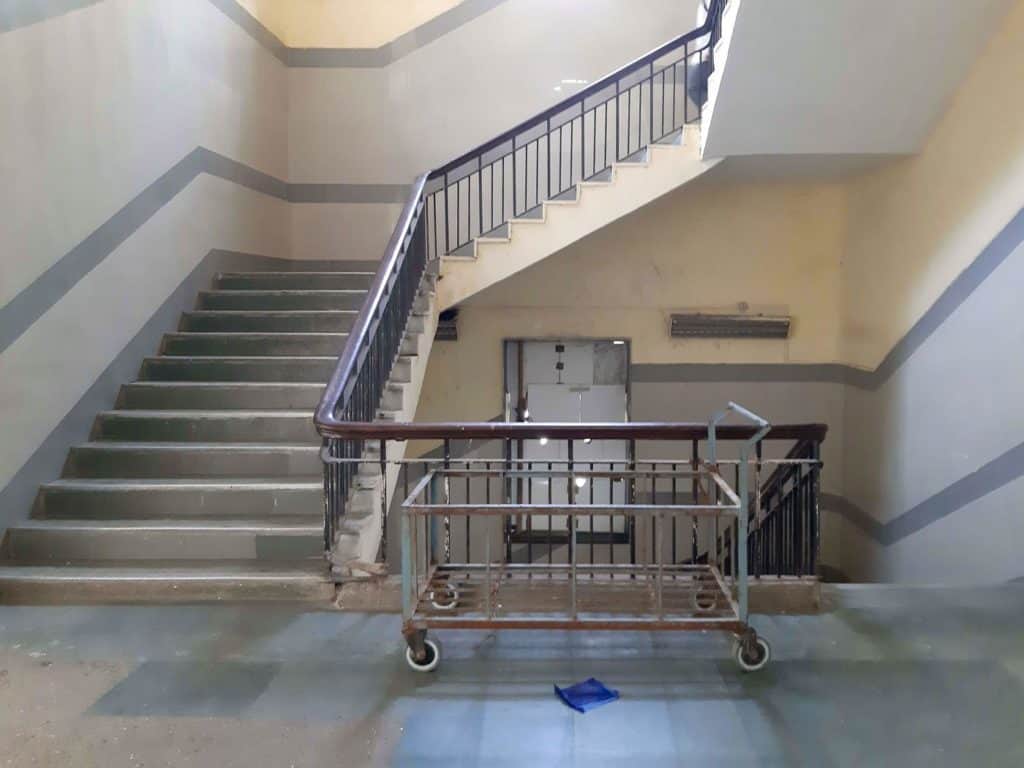
On March 20, after clearing the full bill, a private ambulance with oxygen facilities charged them Rs. 9,000 to take Gopal to the government-run KEM Hospital in central Mumbai. There, tests showed Gopal was still Covid-positive. He was sent to the ICU. A KEM doctor (who didn’t want to be named) told me: “When the patient arrived, he had thrombosis [blockage in arteries in four different locations] which caused loss of blood supply. This led to gangrene [where a considerable mass of body tissue dies]. The infection was spreading and his left leg would have been amputated.”
“It was the first time I came to know that my father had something like gangrene,” says Jyoti. “He never had any serious health issues. He had walked to the local clinic on March 10. But within a few days he was going to lose his leg? Hearing this really shook us all.”
Read more: BMC guide to getting a COVID bed in Mumbai
During this time, Shashikala had frequent spells of fainting and panic attacks. KEM Hospital permitted only one family member to stay, and Vivek was yet to return from the quarantine centre. So for the next week, Jyoti stayed in the hospital, while her other two siblings were in Kalyan looking after their mother.
She spent time on the hospital staircase near the ICU unit, in the daytime ‘attending’ online classes with her final exams approaching, and running in and out whenever the doctors prescribed any medicines. “Here they didn’t charge us anything. I only had to get medicines sometimes,” says Jyoti, for around Rs. 800-1,000 every few days. In the night she slept on the footpath outside the hospital. She ate at the subsidised KEM canteen and used the hospital toilet.
“I didn’t go home because I was scared. What if he needed me and I wasn’t around? Reaching KEM from home would take an hour and half. I didn’t want to waste even a single minute,” she says .
“I couldn’t meet or talk to my father. He communicated with me and our family over the phone. I have the recording of our last conversation. He was thirsty and called me for water in the morning. I ran down immediately and got a bottle from the store. But the staff said he will be given water inside [the ward].”
This last conversation between father and daughter took place on March 28 at 7 a.m. By afternoon a doctor came out and told Jyoti that Gopal’s chances were slim and he had been put on a ventilator. “After two hours they told me about it [Gopal’s death] …” she says. “I didn’t want to hear this and wanted to shut my ears or run away. I called up my family to tell them.”
Gopal was cremated at the Dadar crematorium. Jyoti’s relatives paid for the family’s train tickets to go to UP for the last rituals. They left on March 30 and reached their village on April 1 with his ashes. They have not yet returned to Mumbai.
Jyoti is still preparing for her exams. “I have kept myself busy studying,” she says. “My father didn’t get to study after his father died, and he started working when he was 9 or 10. He wanted us to study. He felt bad that he couldn’t teach all his children,” she says. “He was always proud of my achievements, even the smallest. If I got medals in sports or 85 per cent in 12th, he would go and show my medals and marksheet to everyone in the village. He said study so much that you don’t need to bow down before anyone.”
Jyoti wanted to become a chartered accountant, but knew the cost of coaching classes and didn’t attempt this route. “I have to find any job I can and earn now,” she says. We have to repay all the loans. Bhai [Vivek] wants to get back to Mumbai and start working. Here [in the village] it is difficult to find work. We are yet to sit down and list every single person we have to return money to. The list is long.”
For now, the family is being helped by Jyoti’s elder sister’s husband. The rent for their Mumbai house has been pending for months.
Her mother Shashikala is still in shock. “Everything has been taken away from us, even the little we had built,” she says. “I keep thinking what we could I have done right so that today he would have been with us. We live a simple life and had small dreams, but do we even deserve those?”
Reporter’s note: I have known Jyoti Gupta since early 2020, after a workshop that we attended. The interviews for this story with her and her mother were done on the phone. The conversation with the KEM doctor took place at the hospital.
[This article was originally published in the People’s Archive of Rural India on May 15, 2021.]
